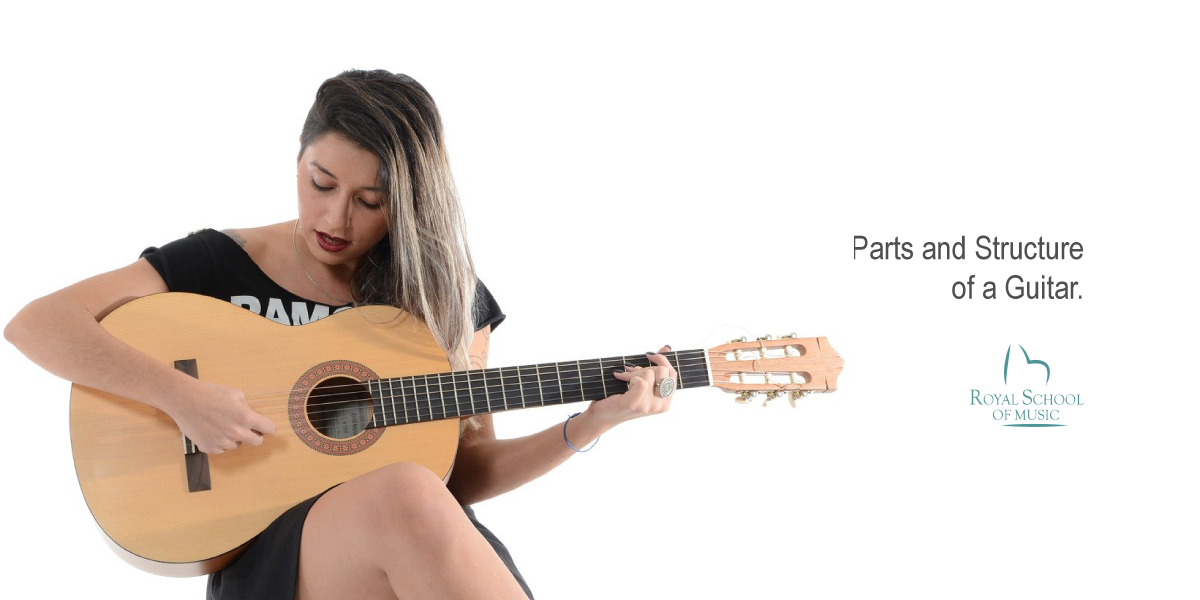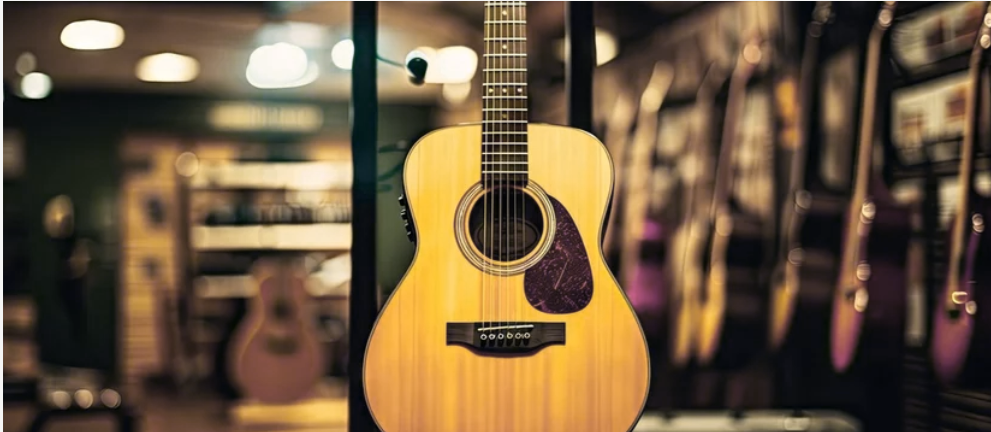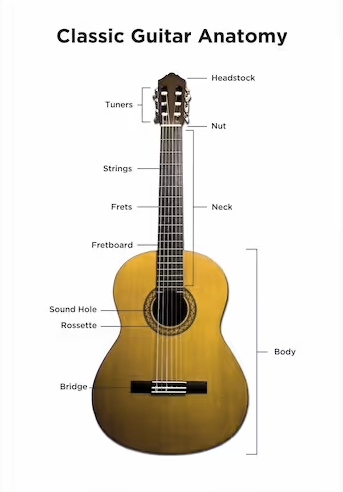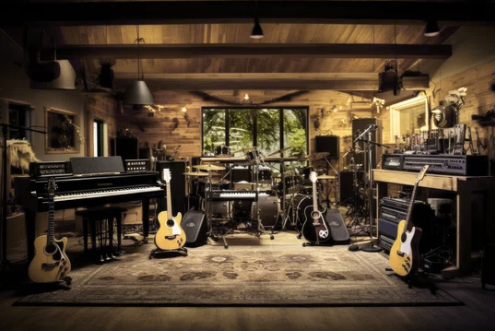The Structure And Parts Of A Guitar

The guitar, whether acoustic or electric, is a musical instrument with a rich history and a complex structure that contributes to its unique sound.
Below, I detail the main parts and the general structure of a guitar:
What Are Its Main Components?
Body
- Soundboard: In acoustic guitars, it is the front part of the body, usually made of woods like spruce or cedar, which vibrates to produce the sound. In electric guitars, the shape and type of wood can affect the tone and resonance.
- Sides: The sides of the guitar’s body.
- Back: The back part of the body, which together with the soundboard and sides forms the sound box in acoustic guitars.
- Bridge: Located on the soundboard, it transfers the vibrations of the strings to the sound box to amplify the sound in acoustics, and in electrics, it usually contains the pieces to adjust the height and intonation of the strings.
- Rosette: Decoration around the soundhole in acoustic guitars.
- Soundhole: Opening in the soundboard of acoustic guitars that allows the sound to come out of the sound box.
- Pickguard: Plate that protects the soundboard from scratches.

Neck
- Fretboard: Surface on the front of the neck where the strings are pressed to change the note.
- Frets: Metal bars embedded in the fretboard that divide the neck into semitones.
- Nut: Small piece of bone, plastic, or metal at the junction between the neck and the head, which keeps the strings spaced and at the correct height.
- Headstock: The top part of the neck where the tuning pegs are located.
- Tuning Pegs: Mechanisms located on the headstock that allow adjusting the tension and, therefore, the tuning of the strings.
- Neck: The long part of the guitar where the fretboard is located. It can be made of a single piece of wood or several laminated layers.

Strings
- Strings: Guitars typically have six strings, though there are variations with more or fewer. They can be made of nylon (in classical guitars) or metal (in acoustic and electric guitars).
Electronic Components (in Electric Guitars)
- Pickups: Transform the vibrations of the strings into electrical signals.
- Potentiometers: Knobs that adjust the volume and tone.
- Pickup Selector: Switch that allows choosing between different pickups or combinations of them.
- Output Jack: Where the cable that carries the electrical signal to the amplifier is connected.

Each part of the guitar plays a crucial role in the production and quality of the sound. The construction, materials, and design of these parts can vary widely, contributing to the diversity of sounds and styles that can be achieved with different guitars.
Buying A Guitar
Learning to play a musical instrument requires skill, discipline and passion, so the earlier a child can start playing the better. For an adolescent or child, it is an opportunity to expand their knowledge and create future possibilities in the world of music.
Buying a piano is an investment that will undoubtedly provide manymoments of satisfaction and fulfillment.



